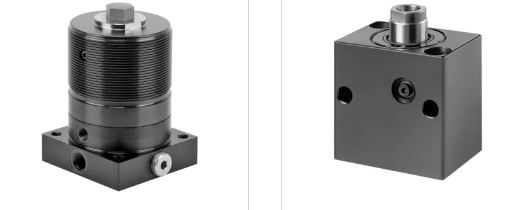Recent Posts
The Nuanced Approach to Designing Power Workholding Fixtures: Exploring the Merits of Pneumatic and Hydraulic Supports
Posted on
In the vast realm of manufacturing and industrial applications, designing power workholding fixtures necessitates an astute grasp of various mechanisms and supports. Sometimes, incorporating pneumatic or hydraulic supports becomes not just a choice, but a requisite to ensure the efficiency and effectiveness of a fixture. Moreover, there lies a nuanced strategy in applying pressure from the bottom of a fixture rather than clamping from the top. This article explores the rationale behind these strategic choices and why they are considered better options in specific contexts.

The Role of Pneumatic and Hydraulic Supports
Before delving into the specifics, it is imperative to understand the role that pneumatic and hydraulic supports play in power workholding fixtures:
- Precision and Consistency: Both pneumatic and hydraulic systems can offer a high level of precision and consistency, which are vital in maintaining the quality of mass-produced items.
- Force Distribution and Control: These systems allow for better control over the distribution of force, ensuring that the workpiece is held firmly without being damaged.
- Adaptability: Pneumatic and hydraulic supports can be adapted to various shapes and sizes of workpieces, which is often necessary when dealing with complex designs.
Pressure from the Bottom: A Strategic Move
Opting to apply pressure from the bottom of a fixture has several advantages compared to clamping from the top. Here's why this approach may be better:
- Enhanced Visibility and Accessibility: Applying pressure from the bottom can enhance the visibility and accessibility of the workpiece, making it easier for operators to work on it without obstructions.
- Even Distribution of Pressure: When pressure is applied from the bottom, it can result in an even distribution of pressure, reducing the risk of deformations which might occur with top clamping, especially for thin or delicate workpieces.
- Increased Stability: Bottom pressure application tends to offer increased stability since the workpiece is supported across a larger area, minimizing vibrations and movements during operations.
Why Not Top Clamping?
While top clamping is a common practice, it comes with its set of challenges, which include potential distortion of the workpiece, uneven pressure distribution, and hindrance in accessing the workpiece for various operations. Moreover, it might induce stress concentrations at the clamping points, which can be detrimental to the integrity of the workpiece, particularly for materials that are susceptible to stress-corrosion cracking or similar phenomena.
Towards Efficient Fixture Designs
Designing a power workholding fixture is an exercise in understanding the nuances of material handling and machining dynamics. The incorporation of pneumatic or hydraulic supports not only offers enhanced control over the workpiece but also contributes to achieving high precision and consistency in manufacturing processes.
Moreover, applying pressure from the bottom of the fixture emerges as a strategic approach to ensure even pressure distribution, enhanced visibility, and accessibility to the workpiece, paving the way for efficient and high-quality production. As the industry evolves, so does the understanding of optimizing fixture designs, with a clear inclination towards strategies that ensure quality without compromising the integrity of the workpiece.
By embracing the benefits of bottom pressure application and leveraging the capabilities of pneumatic and hydraulic supports, manufacturers can indeed foster a future where excellence in production is not just an aspiration but a standard practice.
 Loading... Please wait...
Loading... Please wait...
